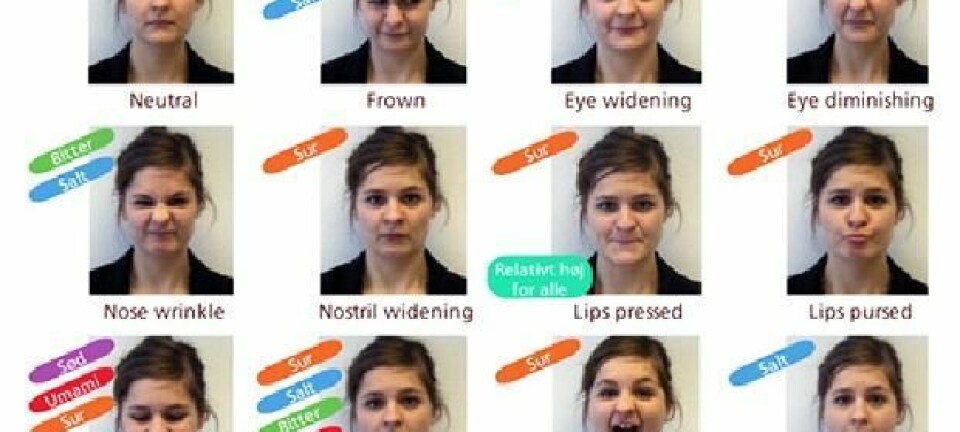
Your face reveals risk of heart attack
The visible signs of ageing in your face can reveal your risk of suffering a heart attack.
Wrinkles, grey hair, a bald spot and a receding hairline are indications that a person has lived a long life.
But some of the facial features can also indicate an increased risk of suffering a heart attack, according to a comprehensive new study involving around 10,500 Danes.
Signs independent of age and smoking
”Our findings show that earlobe creases, cholesterol deposits on the eyelids, a bald spots and a receding hairline reflect the body’s biological age and not just the chronological age,” says Anne Tybjærg-Hansen, a clinical professor at Copenhagen University and a chief physician at the Department of Clinical Biochemistry at the Copenhagen University Hospital.
”Our study established a link between these signs and an increased risk of heart attack, which is independent of the chronological age and other known risk factors for heart disease such as high cholesterol levels, blood pressure and smoking.”
Our findings show that earlobe creases, cholesterol deposits on the eyelids, a bald spots and a receding hairline reflect the body’s biological age and not just the chronological age,
The study was presented at a recent American Heart Association conference. The findings have yet to be published, but are expected to be published in a peer-reviewed journal soon. Tybjærg-Hansen cannot yet reveal which journal it is.
Study has been 35 years in the making
This study started as early as in 1976 as part of the comprehensive Copenhagen General Population Study.
More than 10,000 people aged 20 and over were examined for visible signs of ageing, including the degree of greying hair, wrinkles, baldness in the shape of a bald spot or a receding hairline, earlobe creases and cholesterol deposits on the eyelids and on the cornea.
The researchers also checked weight, cholesterol levels, blood pressure, smoking habits and possible diseases such as diabetes.
Our study established a link between these signs and an increased risk of heart attack, which is independent of the chronological age and other known risk factors for heart disease such as high cholesterol levels, blood pressure and smoking.
Some 35 years later, the researchers could look back on the participants’ medical records. Here they noted which of the examined patients had experienced subsequent heart complications.
Out of the approximately 10,500 people in the study, 3,401 had developed heart disease, while 1,708 had suffered heart attacks.
Age obviously has an effect
They then looked for a correlation between cases of heart disease or heart attack and the visible signs of ageing.
At first glance, the results were obvious, explains Tybjærg-Hansen:
Our research shows that the doctors’ notes can actually be used in the real world.
”Obviously, there’s a link between age – and also signs of ageing – and heart disease risk. It is, after all, an age-related disease.
“We therefore had to filter our data so that we were only looking for a correlation between the visible signs of ageing and the risk of developing heart disease, independent of age and other known risk factors for heart disease.”
Thorough filtering process
In their data analysis, the researchers filtered data for each participant’s age and sex, which eliminated the link between heart problems and wrinkles.
They also filtered out cholesterol levels, weight, blood pressure, lifestyle factors, smoking and social background, all of which may also influence the risk of developing heart problems independently of the visual signs of ageing. This eliminated the link between heart problems on the one side and greying hair and cholesterol deposits on the cornea on the other side.
The researchers were then left with a link between bald spots, receding hairlines, cholesterol deposits on the eyelid and earlobe crevices and an increased risk for heart problems.
For those participants who displayed three out of four of these features, 57 percent had experienced heart disease, compared to those who did not display any of the features 35 years ago.
Receding hairline in men increases the risk
Especially cholesterol deposits on the eyelids and receding hairlines in men increased the risk. In general, though, the more of the visual signs of ageing the person displayed back in 1976, the greater was the risk that he or she had experienced heart problems since then.
“These four signs of ageing are not just an indication of a person’s chronological age; they also reveal their biological age and the condition of their heart,” says the professor.
She adds that as part of the general physical examinations over the years, doctors have continuously kept a record of whether the participants’ appearance corresponded with their age.
“Our research shows that the doctors’ notes can actually be used in the real world.”
-----------------------------
Read the Danish version of this article at videnskab.dk
Translated by: Dann Vinther










